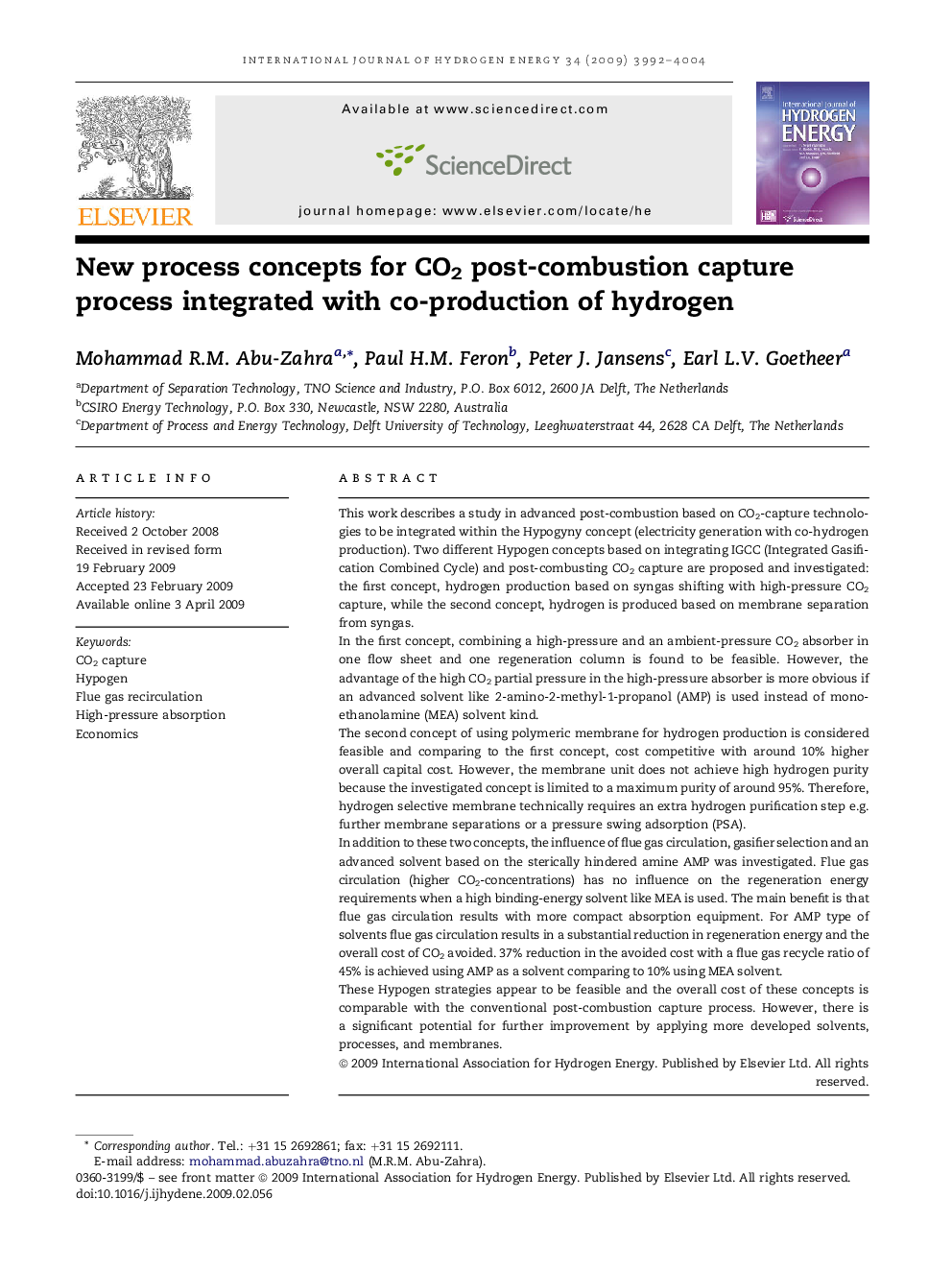| Article ID | Journal | Published Year | Pages | File Type |
|---|---|---|---|---|
| 1279031 | International Journal of Hydrogen Energy | 2009 | 13 Pages |
This work describes a study in advanced post-combustion based on CO2-capture technologies to be integrated within the Hypogyny concept (electricity generation with co-hydrogen production). Two different Hypogen concepts based on integrating IGCC (Integrated Gasification Combined Cycle) and post-combusting CO2 capture are proposed and investigated: the first concept, hydrogen production based on syngas shifting with high-pressure CO2 capture, while the second concept, hydrogen is produced based on membrane separation from syngas.In the first concept, combining a high-pressure and an ambient-pressure CO2 absorber in one flow sheet and one regeneration column is found to be feasible. However, the advantage of the high CO2 partial pressure in the high-pressure absorber is more obvious if an advanced solvent like 2-amino-2-methyl-1-propanol (AMP) is used instead of monoethanolamine (MEA) solvent kind.The second concept of using polymeric membrane for hydrogen production is considered feasible and comparing to the first concept, cost competitive with around 10% higher overall capital cost. However, the membrane unit does not achieve high hydrogen purity because the investigated concept is limited to a maximum purity of around 95%. Therefore, hydrogen selective membrane technically requires an extra hydrogen purification step e.g. further membrane separations or a pressure swing adsorption (PSA).In addition to these two concepts, the influence of flue gas circulation, gasifier selection and an advanced solvent based on the sterically hindered amine AMP was investigated. Flue gas circulation (higher CO2-concentrations) has no influence on the regeneration energy requirements when a high binding-energy solvent like MEA is used. The main benefit is that flue gas circulation results with more compact absorption equipment. For AMP type of solvents flue gas circulation results in a substantial reduction in regeneration energy and the overall cost of CO2 avoided. 37% reduction in the avoided cost with a flue gas recycle ratio of 45% is achieved using AMP as a solvent comparing to 10% using MEA solvent.These Hypogen strategies appear to be feasible and the overall cost of these concepts is comparable with the conventional post-combustion capture process. However, there is a significant potential for further improvement by applying more developed solvents, processes, and membranes.
